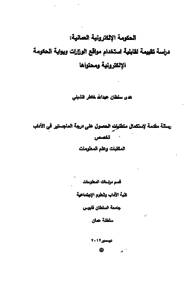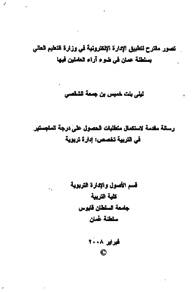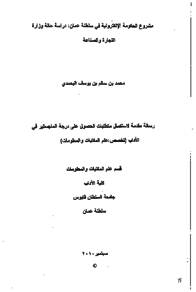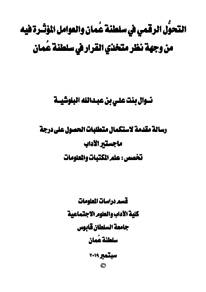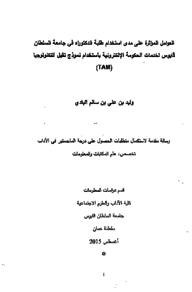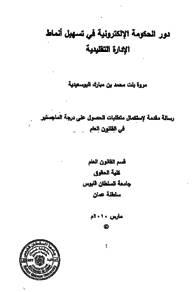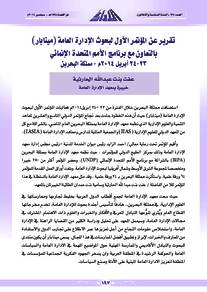وثيقة
الحكومة الإلكترونيّة العمانيّة : دراسة تقييميّة لقابليّة استخدام مواقع الوزارات و بوّابة الحكومة الإلكترونيّة و محتواها
الناشر
جامعة السلطان قابوس
ميلادي
2012
اللغة
العربية
الملخص الإنجليزي
The current study aimed to evaluate the usability of Omani ministries websites (OMW) and the e-government portal (Ubar) and its content according to content and usability criteria adopted from the literature. The study also aimed to provide elements to answer the following research questions: What is the reality of Omani ministries websites with regard to the application of content criteria and usability criteria identified by this study? 2. Is Oman e-government portal website usable? 3. Which are the best government websites according to the criteria used in this study? It also investigated the correctness of the following hypothesis: Omani ministries websites require changes to achieve the e-government objectives. The study used the qualitative approach through the design of an instrument to evaluate the content and test the usability of the OMW and Ubar. The study found that OMW had the same hostname (gov.om) with the exception of the Ministry of Information and the Ministry of Awqaf and Religious Affairs. The results indicated that the majority of the OMW provided "about us" page and "what's new" page or news alerts, determined its services and stated its intended audience but it lacked liability statement. The results revealed some shortcomings in the quality of metadata of OMW where it lacked author, description, and keywords tags. Even those websites which used these tags failed to use relevant tags for the website content. Robots were the least used tags by OMW compared to other tags. It was found that thirteen ministries used the title tag, which was relevant to the website content in more than (50%) of cases. The results also indicated the absence of privacy policy and the exchange of information and its purposes were not clarified by the majority of the evaluated websites. The study also found that only three OMW had won national and international awards. The study also found that the most prevalent services provided by OMW were basic information, followed by electronic forms and publications. The least offered online service was searching databases. One of the significant findings of this study was that only (62%) of OMW were offering a link to the e-government portal. Information organization in OMW was audience oriented. The ministries websites were hybrid since they used different combinations of information architecture. The results showed that OMW did not consider the accessibility features when developing their websites. Thus, none of OMW provided alternative text for non text elements. The testing of the ministries websites with WAVE revealed that only two of them had no accessibility errors while (27%) of them had over 30 accessibility errors. The e government portal was tested and found usable and it was also found that the OMW require changes to its websites in order to achieve the e-government objectives. Based on the criteria used by this study, it was found that the best OMW were those of the Ministry of Education, e government portal, and Ministry of Higher Education,
الوصف
رسالة جامعية
المجموعة
URL المصدر
الملخص العربي
هدفت الدراسة الحالية إلى تقييم قابلية استخدام مواقع الوزارات وبوابة الحكومة الإلكترونية في سلطنة عمان ومحتواها عامة وإلى توفير عناصر أجوية للأسئلة البحثية الآتية: . ما واقع مواقع الوزارات العمانية فيما يتعلق بتطبيق معايير المحتوى ومعايير قابلية الاستخدام
بالإعتماد على المعايير التي حددتها هذه الدراسة؟
بالإعتماد على المعايير التي حددتها هذه الدراسة؟
قالب العنصر
الرسائل والأطروحات الجامعية

